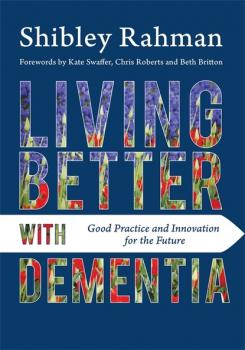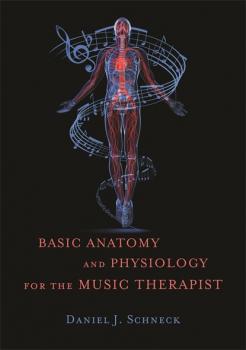Медицина
Различные книги в жанре МедицинаSpiritual Care with Sick Children and Young People
Exploring both principles and best practice of the spiritual care of sick children and young people, this remarkable and inspiring book equips the reader to think critically and creatively about how to provide care in hospitals, hospices and other care contexts for ill and disabled children. Written for staff from any allied health discipline, the authors explore the potential spiritual needs and issues faced by sick children and young people. They provide evidence-based practice principles, and a range of activity-based interactions that empower the child or young person and expand discussion of meaning and identity. The book includes stories and multidisciplinary practice examples, as well as many ideas; practical activities; discussion of work with families, and also of the various tensions and issues that can emerge. Based on evidence-based practice and research carried out by the Chaplaincy Team at Birmingham Children's Hospital, the book will be helpful and inspiring reading for chaplains, nurses, play and youth workers, therapists and anyone else involved in the care of sick children and young people.
Choices in Pregnancy and Childbirth
This is a comprehensive and empowering guide to facilitating a positive pregnancy and birth experience, and ensuring lasting emotional and physical health for mother and baby. Countering increasingly medicalized attitudes towards pregnancy and birth among many healthcare providers, this research-based book discusses the benefits of a more natural approach. It reveals the often undisclosed effects on a child's long-term development of accepted medical practices, such as induction, C-section, surgical interventions and pain-relief medications. It offers advice on how these practices can be avoided, for example with techniques to encourage optimal fetal positioning, by optimising the birth environment, and through drug-free pain management methods. Ultimately, it enables practitioners to support parents in informed, confident decision-making by giving a balanced account of the complex array of options available throughout pregnancy and birth. With invaluable contributions from midwives, doulas, mothers, and doctors, and tried-and-tested advice on sleep, exercise, diet and therapies, this will a very useful reference for anyone working with women and babies. The information will also be relevant to prospective and new parents.
The Luo Collaterals
First referenced in the Ling Shu and the Su Wen, the Luo Collaterals or Luo Mai, are an integral part of the acupuncture channel system. In this book, Dr. David Twicken provides a comprehensive account of the Luo Mai, including detailed analyses of the classical and contemporary theories and clinical applications. Modern practitioners often use the Luo Collaterals to treat the emotions and the organs, with treatments influencing the blood network, especially the veins and capillaries, along the Luo pathways. Dr. Twicken presents a thorough historical analysis of the new theories on which our modern understanding of the Luo Collaterals and Luo points is based, and explains the applications. He explores the classical Chinese medical and Taoist interpretation of the Shen, the five Shen and the emotions and provides a comprehensive historical analysis of the Window of the Sky points. Dr. Twicken also includes instruction on Healing Sounds Qigong, one of the oldest and most effective forms used to treat the emotions, the internal organs and the five Shen. An accessible and authoritative guide to the Luo Collaterals, this book will be of immense value to students and practitioners of acupuncture and Chinese medicine, Taiji and Qigong practitioners; and anyone with an interest in Taoist practice.
Marriage and Lasting Relationships with Asperger's Syndrome (Autism Spectrum Disorder)
Proven counseling strategies that will help improve the relationships of married, long-term or co-habiting couples with Asperger's Syndrome (Autism Spectrum Disorder). ASD relationship expert Eva A. Mendes provides advice straight from the couples' counselling room that can be applied in day-to-day living and help with the challenges that can arise in relationships where one or both partners are on the autism spectrum. This includes issues surrounding diagnosis, mental health, sexual compatibility, sensory needs, executive functioning, theory of mind, communication, and co-parenting. She offers unique practical ideas for positive change such as creating a relationship schedule, making expression of appreciation and gratitude a part of every day, and finding mutually satisfying activities and special interests to engage in with your partner. The strategies in this book will be useful to couples themselves and any couples' counselors or therapists working with them.
Living Better with Dementia
What do national dementia strategies, constantly evolving policy and ongoing funding difficulties mean for people living well with dementia? Adopting a broad and inclusive approach, Shibley Rahman presents a thorough critical analysis of existing dementia policy, and tackles head-on current and controversial topics at the forefront of public and political debate, such as diagnosis in primary care, access to services for marginalised groups, stigma and discrimination, integrated care, personal health budgets, personalised medicine and the use of GPS tracking. Drawing on a wealth of diverse research, and including voices from all reaches of the globe, he identifies current policy challenges for living well with dementia, and highlights pockets of innovation and good practice to inform practical solutions for living better with dementia in the future. A unique and cohesive account of where dementia care practice and policy needs to head, and why, and how this can be achieved, this is crucial reading for dementia care professionals, service commissioners, public health officials and policy makers, as well as academics and students in these fields.
Critical Care
Providing a bridge between research in healthcare and spirituality and practitioner perspectives, these essays on chaplaincy in healthcare continue dialogue around constructing, negotiating and researching spiritual care and discuss the critical issues in chaplaincy work, including assisted suicide and care in children's hospices. Each section of the book is introduced by an academic theologian, giving the book a strong theoretical base, before serving healthcare chaplains offer their perspectives and experiences with material drawn from practice in a broad spectrum of healthcare contexts. The integration of theory and practical application in these essays will be of interest to chaplains, healthcare practitioners, and students of theology and healthcare.
Independent Mental Health Advocacy - The Right to Be Heard
Independent mental health advocacy is a crucial means of ensuring rights and entitlements for people sectioned under the Mental Health Act. This book takes an appreciative but critical view of independent mental health advocacy, locating the recent introduction of Independent Mental Health Advocates (IMHAs) within a broader historical, social and policy context, and anticipates future developments. The text includes the voices of service users throughout, both as authors and research participants. Drawing on their research, the authors provide a historical overview of mental health advocacy, independent mental health advocacy in relation to the law, the role and responsibilities of IMHAs, essential values, knowledge and skills required of advocates, relationships with service providers, commissioning, measuring advocacy outcomes, and how IMHA services can be made accessible and appropriate to diverse groups. This will be essential reading for advocates, social work professionals, academic staff and trainers and will provide mental health professionals with an understanding of, and critical reflection on, the IMHA role. It will also be of particular general interest to survivors and mental health service users, and their families and carers.
Challenging Stress, Burnout and Rust-Out
A balanced lifestyle enhances health, happiness and wellbeing. With practical techniques and strategies, this book explores how this balance can be found and how stress and anxiety, which are linked to being overworked and over busy, may be alleviated. It begins by examining the state of work-life imbalance in our everyday lives and discussing real life examples from a group of professionals working in health and social care. Their stories and experiences illustrate the problems caused by our modern, work-driven society and resonate with how many of us are living today. The author then provides practical tools and techniques to address this overwork culture and achieve a more balanced lifestyle. These simple, yet effective, strategies can be implemented quickly in everyday life. This practical resource addresses a problem affecting many professionals worldwide. It will be of particular interest to helping professionals, including occupational therapists, counsellors and therapists, and will allow them to apply the theories of work-life balance to real life in straightforward and tangible ways. The stories and techniques will also resonate with anyone interested in transforming their overworked or overburdened lives.
Foundations of Theory for Ancient Chinese Medicine
Discussion of Cold Damage (Shang Han Lun) and contemporary texts of ancient China form the bedrock of modern Chinese medicine practice, yet these classic texts contain many concepts that are either hard to understand or confusing. Based on over thirty years' medical practice, and study of the texts, this book explains the concepts involved so that the clinical applications of the ancient texts can be better understood and put into practice. The author looks at the larger context of ancient Chinese culture and philosophy in terms of theoretical knowledge, scholarly approach, and mindset in order to explain the basis for the medical texts. He also discusses the work of later Chinese medical scholars in elucidating the texts. He then goes on to look at more specific issues, such as the six conformations, zang-fu organ theory, the theory of qi and blood, the theory of qi transformation, and how these are understood in the ancient texts. He also discusses shao yang and tai yang theory; the element of time, and its place in understanding six conformations diseases. This remarkable work of scholarship will clarify many questions about the interpretation of the ancient texts for modern use, and will find a place on the bookshelf of every practitioner of Chinese medicine, as well as on those of scholars of Chinese medicine.
Basic Anatomy and Physiology for the Music Therapist
Providing need-to-know information about the human body for music therapists, this book covers the elements of anatomy and physiology that are of particular relevance to clinical practice. Addressing both the structure and function of the human body, the material is presented with the music therapist in mind. Particular attention is paid to the role of music in affecting responses from the organ systems, including the senses, the endocrine glands, the immune system, the musculo-skeletal system, the nervous systems and the vestibular system. Dr Schneck also uses accessible musical metaphors to explain complex biological information. Emphasising the symbiotic relationship between music and the body, this book reveals how an understanding of this relationship can help music therapists to practice more effectively, and will be of interest to students and practitioners alike.









